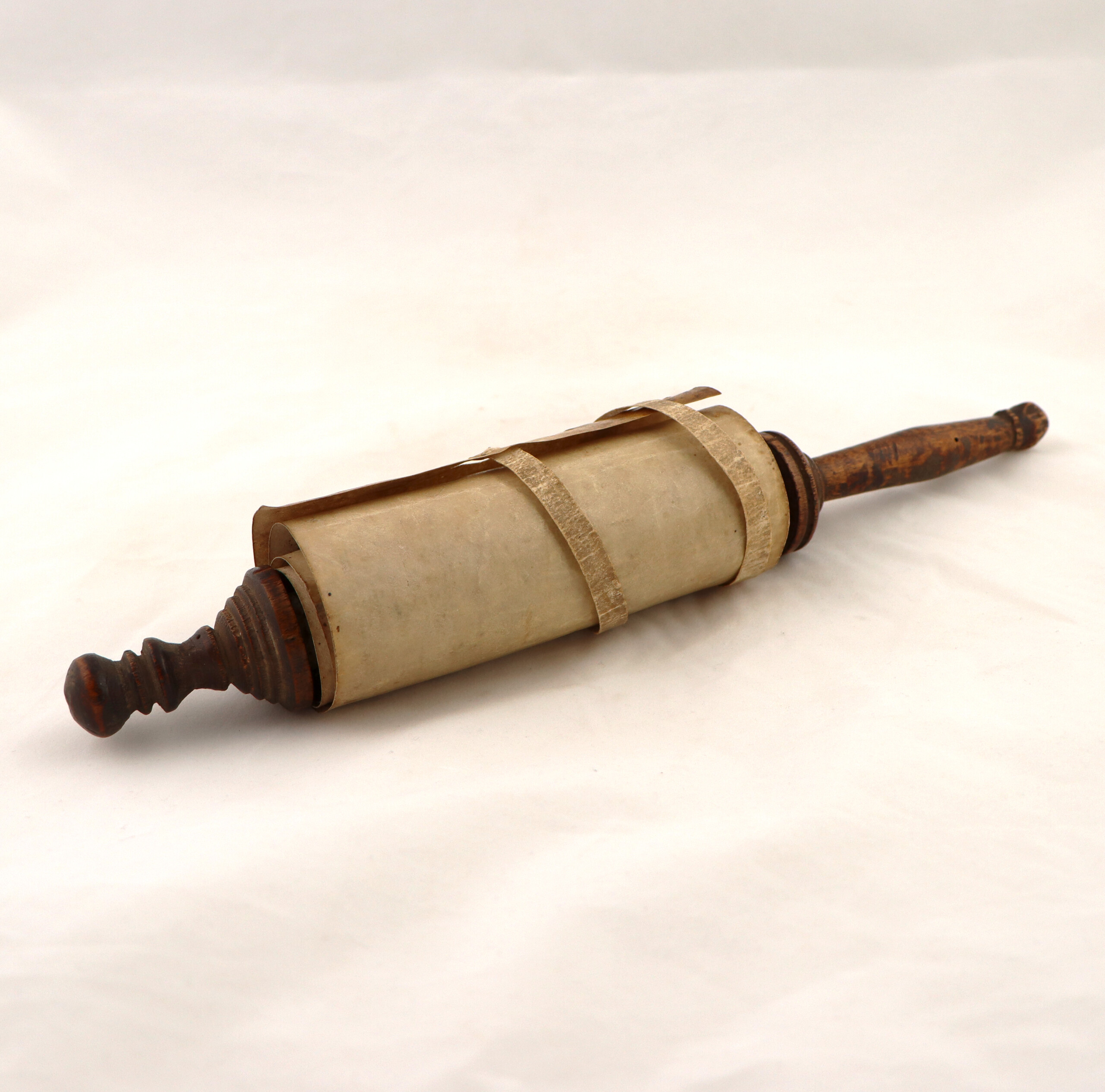Project Description
There is no telling what exactly this little scroll has seen in its lifetime, or where its journey has taken it. It has likely seen the bustling and tense streets of an early twentieth century Jerusalem, when it was sold to an American tourist there and brought to Kentucky. Was it made to be sold in Jerusalem, or was it brought there by immigrants from Russia? From Baghdad? From Aleppo? How long did it pass along the story of Queen Esther before it was sold in Jerusalem, and to whom? These are the questions that this scroll poses, but cannot answer.
What is known is that, like others of its kind, this scroll contains the biblical Book of Esther in its traditional Hebrew which is ritually read aloud to Jewish communities from start to finish on the Jewish holiday of Purim. In Jewish tradition, the scroll is considered sacred and must be copied exactly from a previously existing scroll or it is not considered valid. The scribes of these scrolls are almost always anonymous, and no artistic liberties are allowed in the content of the text, though sometimes scrolls are adorned with decorative text, illustrative panels, or elaborate handles. The undecorated nature of this scroll suggests that it was likely created for communal use rather than for the personal use of a wealthier individual or family, as was common for more heavily decorated scrolls. Pieces of this scroll’s journey can be reconstructed through features such as its slightly worn handle and smudged letters, suggesting it has been read and used many times before.
– Jacob Bledsoe

